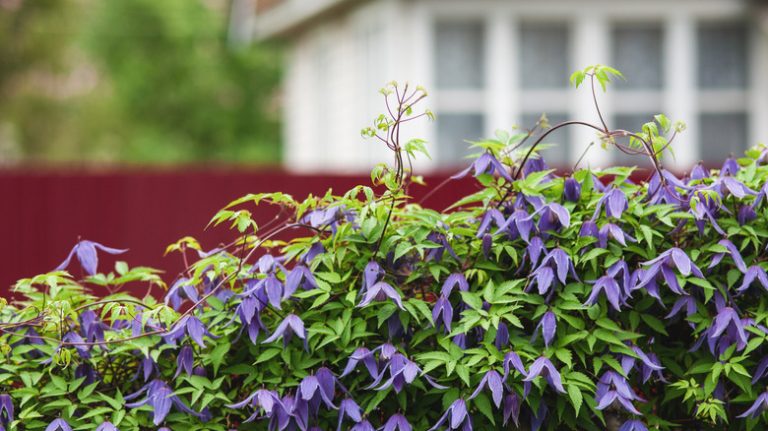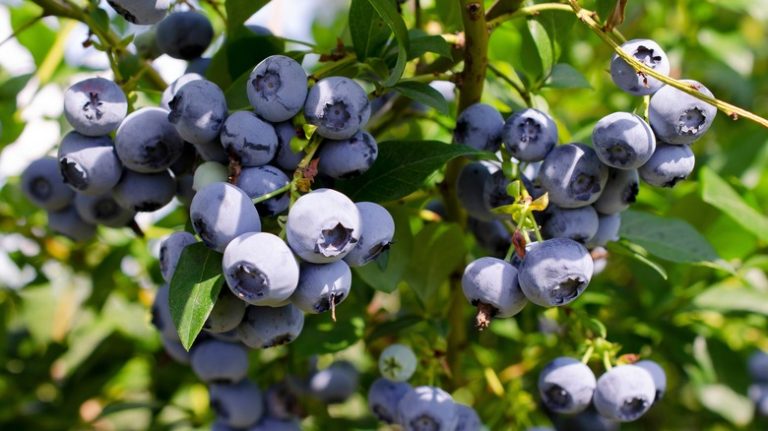The spirea bush, also known as the ‘princess of the garden’, is an old favorite in gardens worldwide. These beautiful shrubs bring a burst of color and add charm to any landscape. They can be found in a variety of colors, including white, pink, and dark-leafed varieties. Spirea bushes are native to Asia, specifically Russia and Japan, but they have been a long-time favorite of gardeners everywhere.
One of the key benefits of spirea bushes is their ability to attract wildlife. Birds, butterflies, and other insects are drawn to their colorful blooms and nectar-filled flowers. In addition, spirea bushes are compact and well-drained, making them a perfect addition to landscapes with limited space and poor drainage.
When it comes to care, spirea bushes are relatively low-maintenance. They prefer full sun exposure and well-drained soil, although they can tolerate a wide range of conditions. These hardy shrubs are known for their ability to withstand most weather conditions, including freezing temperatures and hot summers.
One popular variety of spirea bush is the ‘Goldflame’, which features colorful foliage that changes from orange in spring to gold in the summer. Another favorite is the ‘Van Houtte’, known for its cascading white flowers that bloom in early summer. The birchleaf spirea is also a standout, with its upright form and long-lasting white flower clusters.
Whether you’re a seasoned gardener or just starting out, spirea bushes are a great addition to any garden. Their vibrant colors and attractive foliage make them a great companion for other flowering plants, and they can be planted in borders, hedges, or as a focal point in the garden. With their low-maintenance nature and ability to withstand a variety of conditions, spirea bushes are sure to bring beauty and charm to your outdoor space.
Spirea New Look for an Old Favorite
The spirea bush has been a favorite in gardens for many years. Its popularity stems from its versatility and ease of care. It can be used in a variety of ways, from a stand-alone flowering bush to a beautiful accent in a garden border or even as a wreath for decoration.
One of the reasons why the spirea bush is so popular is its ability to adapt to different growing conditions. It can tolerate a wide range of soil types and can thrive in full sun or partial shade. It is also easy to propagate, and new plants can be easily grown from stem cuttings or by dividing the root ball.
There are many different varieties of spirea to choose from, each with its own unique look and growing habits. Some of the most common varieties include the “Snowmound” spirea, which has cascading white flowers that resemble snow, and the “Goldflame” spirea, which has vibrant golden foliage that turns a fiery red in the fall.
Spirea bushes are known for their beautiful flowers, which can range in color from white to pink to blue, depending on the variety. They bloom in the spring and summer and can continue to produce flowers throughout the season if properly cared for.
To keep spirea bushes looking their best, regular watering and fertilizing is key. They should be watered deeply once a week, and a slow-release fertilizer can be applied in the spring and again in the fall. Pruning can help maintain the desired shape and encourage new growth.
Spirea bushes are generally hardy and can withstand cold temperatures, but they may benefit from some winter protection, especially in colder climates. A layer of mulch around the base of the plant can help insulate the roots and protect them from freezing.
When it comes to pests and diseases, spirea bushes are relatively resistant. However, they may occasionally attract pests such as aphids or spider mites. Regular inspection and treatment with an appropriate insecticidal soap or horticultural oil can help keep these pests at bay.
In conclusion, the spirea bush is a versatile and beautiful addition to any landscape. Its wide range of colors and easy care make it a popular choice for gardeners of all skill levels. Whether planted as a standalone bush or used as a border or accent plant, the spirea bush is sure to add beauty and interest to any garden.
Common species and hybrids of this long-time garden favorite include
| Species/Hybrid | Common Name | Habit | Color |
|---|---|---|---|
| Spiraea japonica | Japanese spirea | Compact | Pink, red, white |
| Spiraea x vanhouttei | Vanhoutte spirea | Taller | White |
| Spiraea x bumalda | Bumalda spirea | Compact | Pink |
| Spiraea x prunifolia | Bridal wreath spirea | Taller | White |
These are just a few of the most common species and hybrids of spirea bushes. Each variety has its own unique look and characteristics, but they all have one thing in common – they are all stunning additions to any garden. Whether you have a small, compact garden or a larger, more expansive space, there is a spirea bush that will fit perfectly into your landscape.
The most popular spirea varieties in the heartland of the US are definitely the Vanhoutte spirea (Spiraea x vanhouttei) and the Bumalda spirea (Spiraea x bumalda). These shrubs are easy to grow and are known for their beautiful cascading blooms. They are often found in older, established gardens, where they have been enjoyed and cherished for many years.
Another popular spirea variety is the Japanese spirea (Spiraea japonica). This plant is native to Japan and is loved for its vibrant and long-lasting blooms. The Japanese spirea comes in a range of colors, including pink, red, and white, making it a versatile choice for any garden.
If you are looking for a taller spirea bush that will add height and interest to your garden, the Bridal wreath spirea (Spiraea x prunifolia) is a great choice. This variety can reach up to 8 feet in height and is known for its beautiful white flowers that cover the branches in a flowing, cascading manner.
When it comes to planting spirea bushes, they prefer well-drained soil and full sun or light shade. They can tolerate a wide range of soil types, but they do not like wet or boggy conditions. Spirea bushes are generally low-maintenance plants, but they may require occasional pruning to remove dead or damaged branches and maintain their shape.
Like any plant, spirea bushes can be susceptible to certain diseases and pests. However, they are relatively hardy and are not commonly affected by many issues. Some common diseases that may affect spirea bushes include powdery mildew and leaf spot. Regularly inspecting your plants and providing proper care and maintenance will help prevent and treat any potential problems.
Overall, spirea bushes are a favorite in the garden for their beautiful blooms, attractive foliage, and ease of cultivation. Whether you prefer compact or taller varieties, there is a spirea bush that will suit your preference and burst with color in your garden.
Spirea Bush
The spirea bush, also known as spiraea, is a favorite among garden enthusiasts. This versatile shrub is appreciated for its range of colors and variety of blooms. There are many different varieties of spirea to choose from, each with its own unique characteristics. Whether you prefer a compact or overgrown bush, there is a spirea variety that will suit your gardening preferences.
One well-known variety is the bridal wreath spirea, which features cascading branches of white flowers in the spring. Another popular choice is the goldflame spirea, which has vibrant orange-red foliage in the summer. For a more compact option, the birchleaf spirea is a great choice.
When it comes to caring for spirea bushes, they are relatively low maintenance. They are adaptable to a range of growing conditions but prefer well-drained soil. Spirea bushes should be fertilized in the spring and can benefit from regular pruning to maintain their shape and promote new growth.
In the garden, spirea bushes can be used in a variety of ways. They make excellent massing plants, where their bright blooms can create stunning displays. They also work well as companion plants, often used in mixed plantings with other shrubs and flowers.
Spirea bushes are native to many different regions, including Russia, Korea, and parts of North America. They are hardy plants that can withstand cold winters and hot summers. Some varieties are even deer-resistant, making them a great choice for landscapes where wildlife may be a concern.
Whether you are an experienced gardener or just starting out, spirea bushes are a wonderful addition to any garden. Their beautiful blooms and easy care make them a popular choice among gardeners of all levels of expertise. So, if you’re looking for a reliable and colorful addition to your garden, consider adding a spirea bush.
Spirea Superstars
Spirea superstars are a group of shrubs that are known for their bright and colorful blooms. These plants are easy to grow and take care of, making them a popular choice for landscapes in many areas.
Spirea bushes come in a wide variety of sizes and colors, including lemon-lime, blue, and goldflame. Some of the most popular spirea varieties include Bridal Wreath, Anthony Waterer, and Goldflame. These superstars attract attention with their vibrant blooms and leaf colors.
Spirea superstars have an upright and compact growth habit, making them suitable for small gardens or containers. They can thrive in a variety of weather conditions and are often resistant to pests and diseases. These shrubs prefer well-drained soil and need watering at least once a week.
When it comes to pruning, spirea bushes are quite forgiving. They can be pruned back in late winter or early spring to encourage more vigorous growth. This also helps to maintain their shape and promote a fuller appearance. Dead or damaged branches should be removed promptly to keep the plant healthy.
Spirea superstars can be used as a focal point in the garden or as a companion plant to other shrubs or perennials. They look especially beautiful when planted alongside hydrangeas or other flowering plants. Their bright and colorful blooms can add a vibrant touch to any landscape.
Propagation of spirea superstars can be done through cuttings or by dividing mature plants. Cuttings should be taken in early summer and rooted in a moist soil mix. Dividing spirea shrubs should be done in early spring or fall to ensure better success.
Whether you have a small garden or a large landscape, spirea superstars are a great choice. These easy-to-care-for shrubs will brighten up any area with their beautiful blooms and colorful foliage. From the showy Bridal Wreath spirea to the compact and fast-growing Anthony Waterer, there is a spirea superstar for every gardener’s taste.
For more information on growing spirea superstars, you can ask your local agricultural extension bureau or consult gardening resources online. Enjoy the beauty and versatility of these superstars in your own garden!




